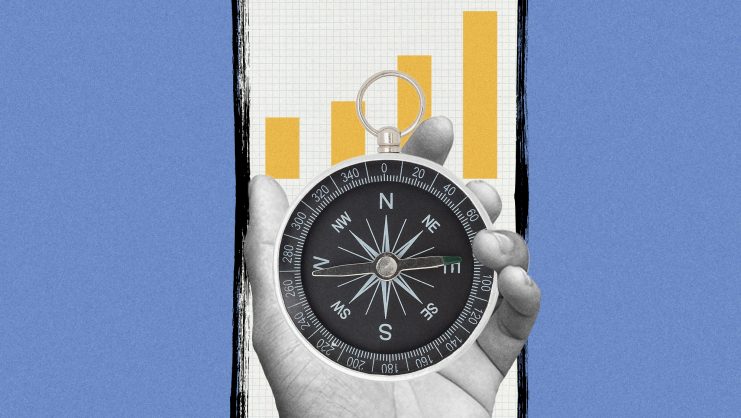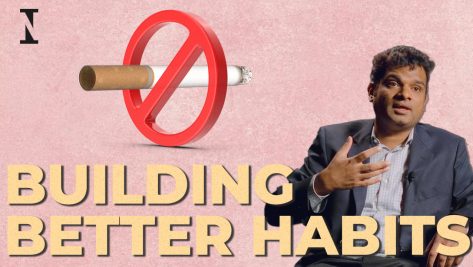Talking Trends: Happiness
Happiness and purpose. We spend a lot of time chasing them. But do we really know what they are? Best-selling author Arthur Brooks sits down with Lee Newman to discuss finding purpose in your life and happiness in the workplace.
© IE Insights.
Transcription
Lee Newman: Arthur, it is an absolute pleasure to have the chance to sit down with you today, to talk about a topic that I think is so dear to so many of us: happiness. Thank you for being here.
Arhtur Brooks: Thank you for having me.
LN: So let me start. Happiness, I think, can be an elusive concept for many people, a challenge to pursue and cultivate. Why elusive and why so challenging?
AB: Well, it’s been something people have been looking for thousands of years, obviously, but it’s really burdened with two big mistakes that people make about it. To begin with, people think that happiness is a feeling, which it isn’t. Feelings are evidence of happiness, but they’re not happiness itself. Feelings or emotions. They’re designed to give us signals about what’s going on in the world, whether they’re threats or whether they’re opportunities. And if you hook your happiness up to your feelings, it’s going to be a big problem. And a lot of people do that.
The second is that people, the mistake that people make is they think that happiness is a destination and they can actually get there in this life. And you can’t because you have aversive situations and you have things that are happening to you that are not supposed to make you happy. And so pure happiness is actually not a destination, it’s more of a direction. Once we start to understand those things, we can start to make some real progress.
LN: So it is a process, it’s a journey. And so that makes me think of your new book. Congratulations, that you’ve written with Oprah Winfrey. And, in that book, you talk about three macronutrients, which I think is a very interesting term, macronutrients, to, cultivate happiness along this journey. I’m curious, why the term macronutrients?
AB: Well, I started off with this metaphor, of happiness as a meal. Now, you wouldn’t say that your meal is the smell of the meal any more than you’d say that your happiness is feelings of happiness. The feelings are evidence of happiness and the smell of your turkey dinner is evidence of your Thanksgiving. But your Thanksgiving dinner is a real thing.
And it’s really made up of three macronutrients: protein, carbohydrates, and fats. So all nutritionists talk that particular way, and those are the building blocks of food. Similarly, the building blocks of happiness are threefold in much the same way; they are enjoyment, satisfaction, and meaning. Where you have to enjoy your life to be a happy person, and you need to get satisfaction in your accomplishments and work.
And you have to have a sense of meaning, the why of your life. And if you don’t have those things in proper form and order, balance and abundance, just like the macronutrients in your diet, you’re not going to be well.
LN: I’m personally interested in, and I know from talking with our community in the third building block: meaning. And it’s something that I’m hearing constantly from students, alumni, everyone in the world, that I’ve talked to, this topic of purpose, my purpose, my meaning comes up and I’m wondering, what are the trends that you see that are driving that? Why are we hearing this so often?
AB: It’s not encouraging. One of the things that we find is that younger adults in particular, are having a harder and harder time finding this sense of meaning for lots of different reasons. But that gives us an opportunity in Higher Ed, in particular, to talk about how to find your sense of meaning. And that’s what I spend a lot of time talking about: the science of that, the philosophy of that, even the neuroscience of how people find meaning. And meaning comes down to three parts: coherence, why do things happen the way they do? Purpose, what are my goals and direction in life. And significance, why does it matter that I’m alive?
I actually have a little quiz that I give people to find out whether there’s a meaning problem in their life, and if there is, it’s not bad news. They’ll know what to pursue on the basis of these questions.
So here’s the quiz. And there are no right answers. There’s only your answers. Question number one is why are you alive? You need an answer to that question. And it might be who created you. It might have to do with what you’re put on earth to do, or both. And the second question is a little bit harder: for what would you be willing to give your life today?
And, I mean, look, you and I are dads. And so I know the obvious answer for you and me, but for a lot of young adults who don’t have children yet, they don’t have an answer to that necessarily. And that can be quite disconcerting. So I tell people, look, if you have a meaning crisis in your life and I’ve got ways to figure that out, now you know what to go in search of is the answers to these particular questions. And when you find it, it’s almost like a miracle in your life.
LN: And so you mentioned education as part of this. And we’re both teachers. So that’s something close to our hearts. And it’s interesting you teach a course at Harvard that brings together happiness with leadership. And some might argue that in fact, leaders, corporate or governmental leaders, are creating a lot of unhappiness.
AB: Many do.
LN: So it’s interesting that you’re bringing them together. And I’m curious, what are the connections that you make in that course and that we should all be thinking about with the connection between happiness and leadership?
AB: The value proposition, which I also have in my lab at Harvard, is how to make leaders into happiness teachers. And so on the first day of class, I show them all these data that if you actually are a happiness teacher and people get happier in your workplace, things are going to go a lot better for your business. But you have to know how to teach it.
And starting that teaching process starts with your own happiness. Like they say on the airplane, you got to put on your own oxygen mask first.
LN: In terms of leaders, does the leader have to cultivate their own happiness and get to a certain point before you would say, grant them the right to try to create it in the environment as a chief behavior officer, so to speak? Or is it something that they should be working on in parallel?
AB: In parallel, but they have to be serious about their own happiness. Nobody wants to work for a miserable leader. I mean, it’s just the worst. And that follows intuitively. Everybody has worked for miserable leaders, and it’s just not fun and it’s not effective. So once people are on the journey for themselves, then they really want to share it with other people.
And that’s kind of the condition that you need. It’s like you’re learning, you’re changing your habits and now you’re starting to spread it to other people in kind of a spirit of love and lifting people up and bringing them together. And that’s when work starts to get pretty fun. And that’s what I’m all about.
LN: It’s interesting. So if you’re one of those people in a workplace where you have a leader who’s not happy, and you said an unhappy leader tends to create an environment that is not particularly conducive to the cultivation of happiness. So what’s the advice for professionals working in a fairly toxic environment? How do they cultivate and pursue their happiness?
AB: They start to work with the people who are around you. This is really what I talk about. So I meet people who are in middle management all the time and they say “the hierarchy of the organization is, you know, infused with misery, with unhappiness”. And I they start looking around you at the people you can actually influence, start becoming a happiness leader yourself.
And what will happen is you’re going to find yourself starting to manage up. Why? Because the people who you work for look at you and say, “she’s got something, I want some of it”. And you’re going to actually be able to share it up as well as sideways and down.
LN: Let me try to connect, so you mentioned meaning before, we just talked about happiness in leadership. So as a leader, what can you do, given that people are in search of meaning, as you said, what can you do as a leader to try to build meaning into the daily life of your employees?
AB: Yeah. I mean, this is a good question. And I’ve looked at this a lot and looked at the data on what actually brings a sense of workplace meaning more than anything else. And, you know, I’ve looked at the standard measures, you know, how much should you pay people and how much do acknowledgments and recognition of hard work and job title, how much does that matter?
And the answer is not very much. If somebody doesn’t have a sense of meaning, you’re not going to be able to keep them around. I mean, really with almost any amount of money, as a matter of fact, because we live in competitive economies and good businesses will hire somebody who’s unhappy away from you if they’re a productive employee.
There’s really two dimensions you need to work on. Number one is a sense of earning your success, and the other is the sense that you’re serving other people. You need to have that in your own career as a leader, so that you can find satisfaction and joy in your own work. But you have to create that environment for people who work for you as well.
Those are the only two dimensions that really matter for finding meaning at work. Now, when I talk about earned success, that means creating value with your work and value in the lives of other people and being recognized and acknowledged for it, that’s really important. And that’s why meritocracy is so critically important. Running organizations that are not meritocratic, they just decimate the morale of people because this earned success is not present.
The second is helping people see that they’re lightening the load for somebody else, is actually seeing the faces and hearing the voices of the people that their work is affecting. And that’s not easy in a lot of organizations. I was actually doing a lot of policy analysis for members of the executive branch of the U.S. government and for members of Congress, and I started to bring them in to talk to the staff that would never be public facing: people working in the mailroom, people working in the cafeteria.
And I had the politicians say, these are the things that we’re doing, and it takes this organization, everybody in this organization to get it done. And I’m telling you, it was a new day at the organization when they started to see themselves as part of a team that was creating that kind of value or serving other people that way.
LN: Well, great advice for me personally and for, I think anybody leading other people. And many, many ideas to take from your book and from what we’ve talked about. So thank you very much for being with us today.
AB: Thank you for having me.










